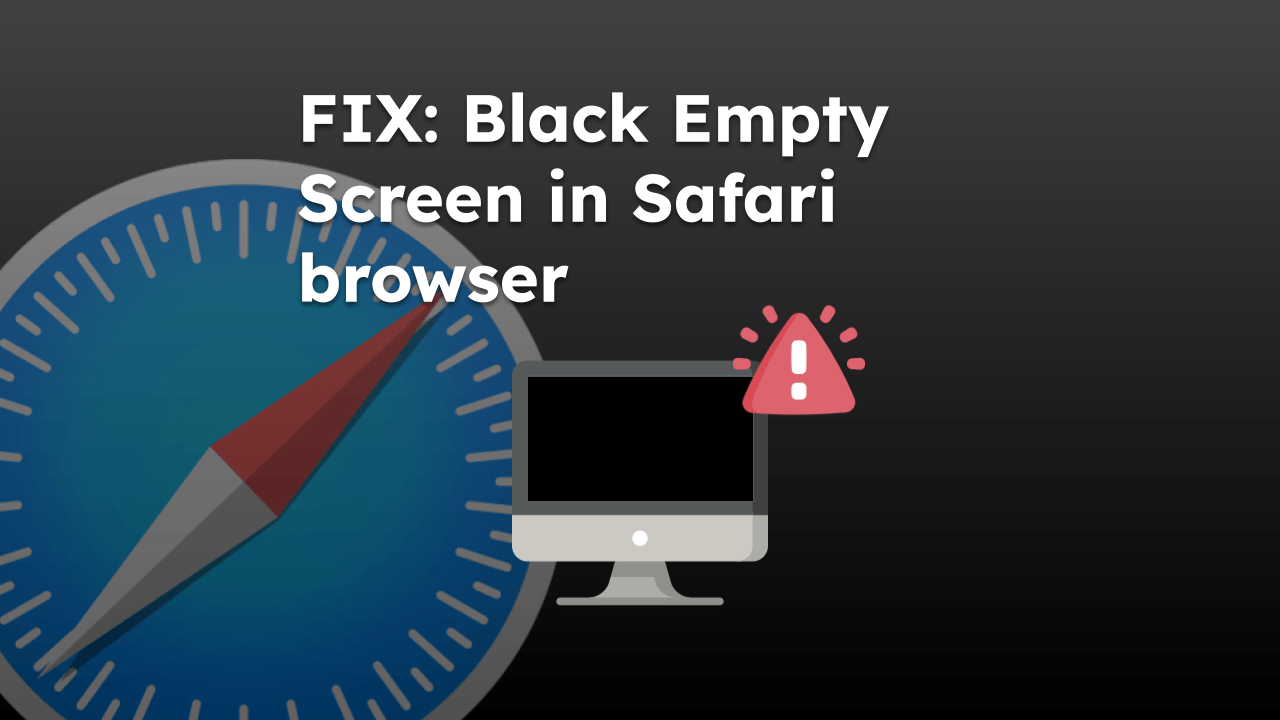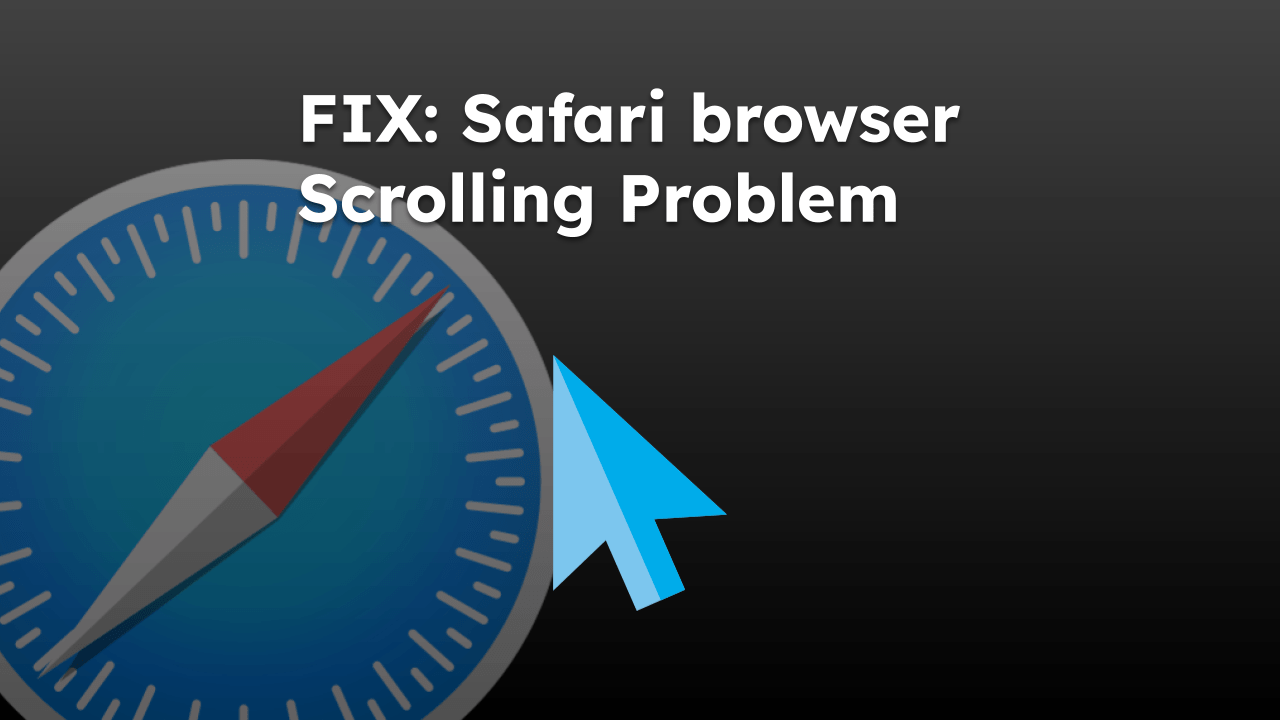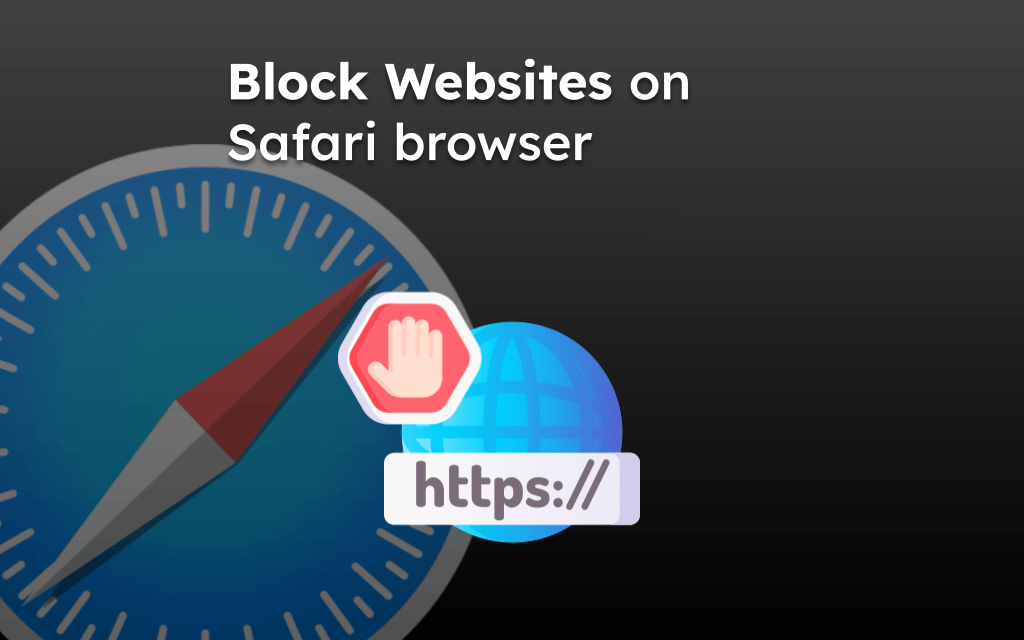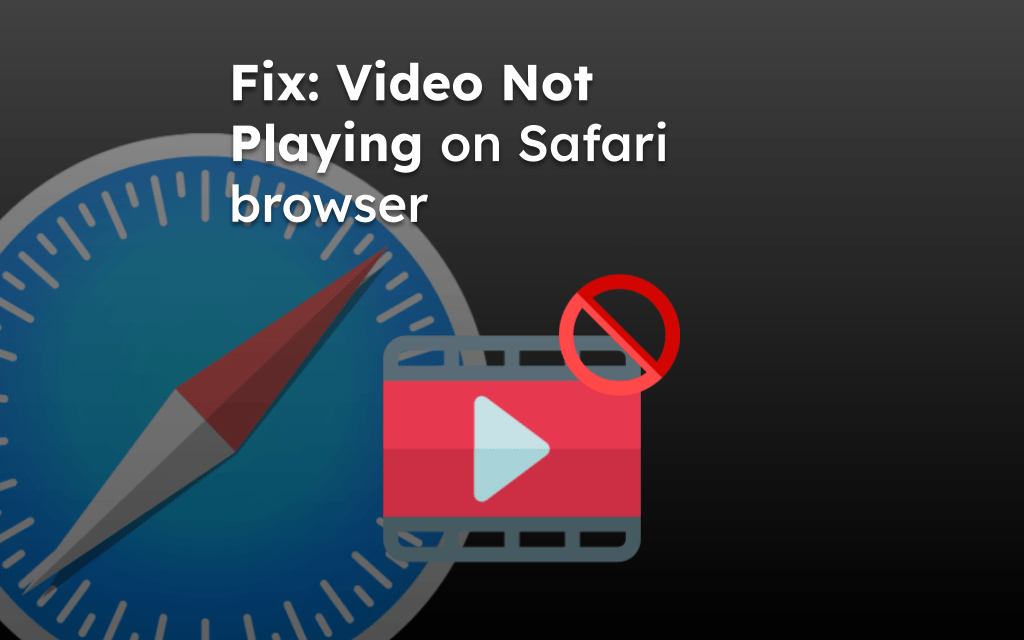The Safari browser downloads webpage content and images from the online server. However, rendering issues might not make the photos appear correctly or be scrambled.
In such cases, you can downgrade the display settings, clear outdated cache, turn off conflicting extensions, and keep checking for system updates for the fix from Apple Developers.
Users have reported that the browser cannot load images or render a scrambled or distorted unrecognizable picture.

In this guide, I have shared written instruction about:
Method 1: Restart your Mac System
It’s always recommended to start with fundamentals when troubleshooting browsers or technical issues. Most of the time, a simple device restart can help in resolving the problem.
If the Safari browser cannot load images, you should consider restarting your Mac.

After restarting, check for the browser to load the images. This should solve any temporary installation that we are awaiting restarting.
Method 2: Check for Internet Speed and Connection Stability
You can check if the network connectivity is good enough to load heavy images and files. You can try to ping google.com to check if there are any packet losses.
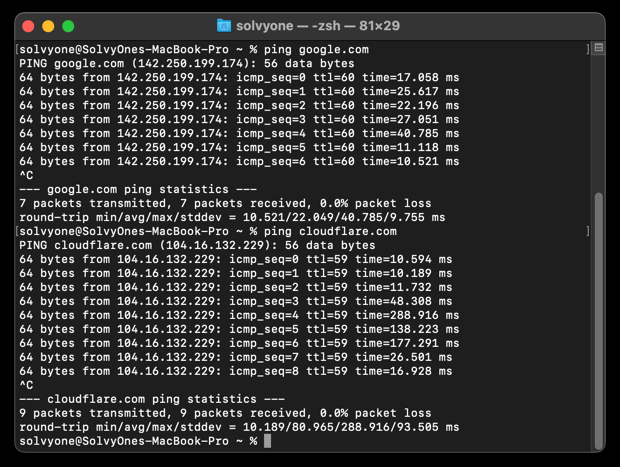
The network bandwidth speed is another step that you should check to ensure enough browsing speed with low latency.
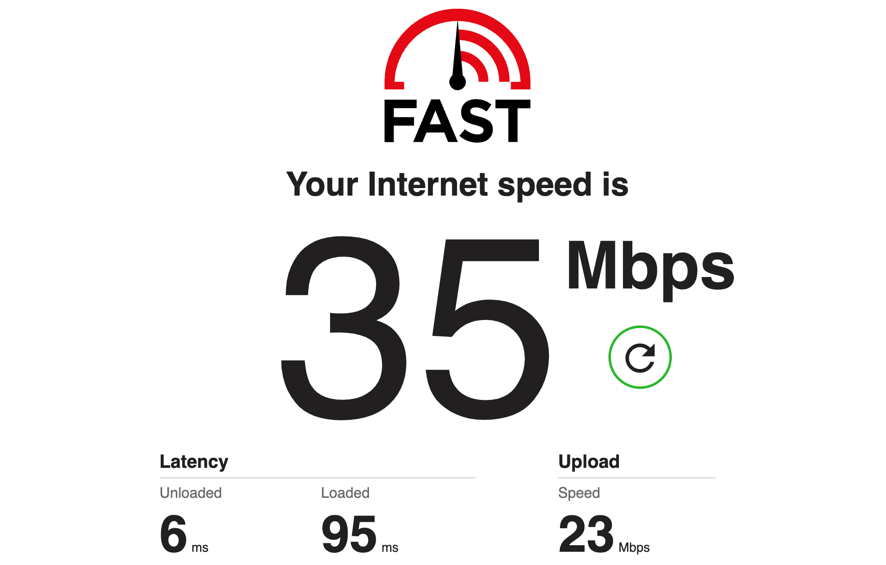
You can find the mentioned and a few other basic browser troubleshooting guides, which include detailed steps to get started before moving to advanced steps.
Method 3: Downgrade the Mac Display Settings
If Safari is loading text and the problem lies with rendering only images or pictures, your device display settings also play a significant role, especially when the photos are scrambled, distorted, or only loaded in parts.
When your display settings are set to the highest possible settings (XDR, ProMotion, Retina, True Tone, etc.), the browser tries to render the images that match the setup using the most system memory.
Downgrade the display settings to suppress the image rendering process in such cases.
- Click on the Apple
 in the menu bar and select the System Settings menu.
in the menu bar and select the System Settings menu.
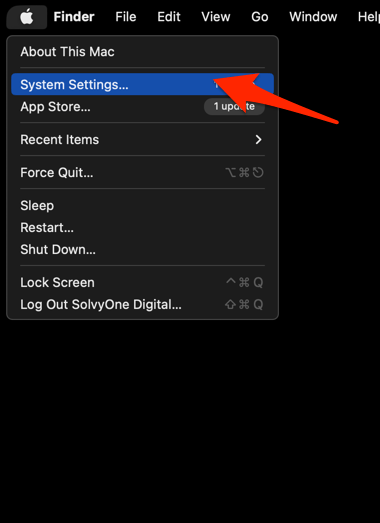
- In the left pane, scroll down to select Display settings.
It will open the Display setup page. - Depending on your Mac device, customize it to lower performance.
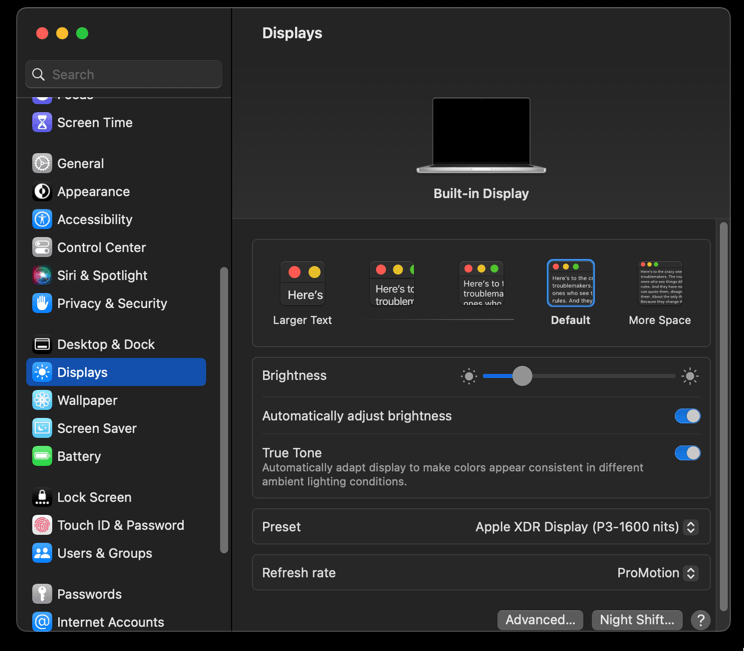
On Macbook 14 M1 Pro, I can:
- Turn off the True Tone
- downgrade Refresh Rate to 60 Hertz and
- change the Preset level to Apple Display (500 nits) instead of XDR Display (1600 nits).
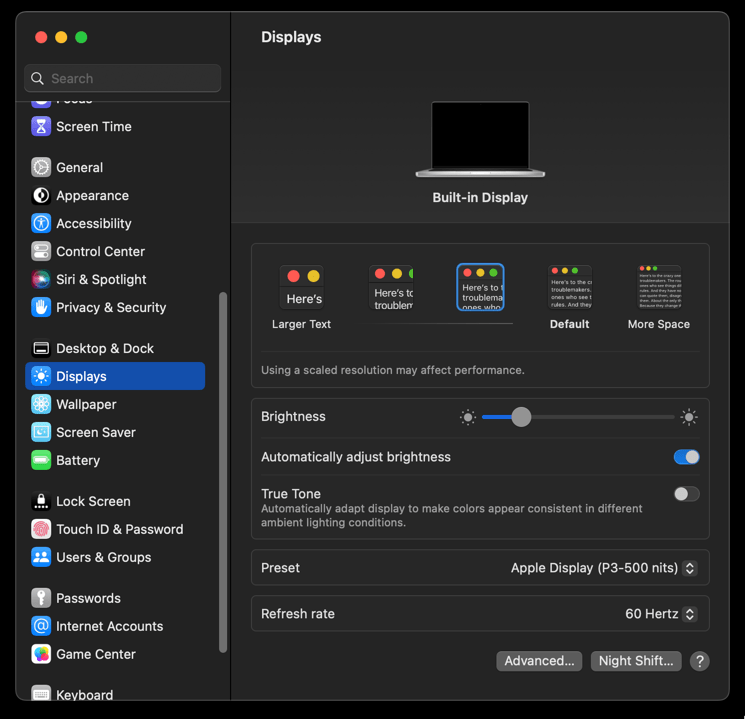
It will significantly reduce the system stress and render images typically but with a compromised display feeling.
Similarly, you can customize your device display settings to have minimal effect on performance without much compromise.
Method 4: Update the Safari browser to Latest Version
The recent upgrade might have broken the image rendering functionality if you’ve started encountering the issue after a macOS or Safari update. In such cases, we need to wait for Apple to release another update with a patch fix.
- Click the Apple
 menu and select System Settings from the drop-down menu.
menu and select System Settings from the drop-down menu.

- Switch to the General tab in the left pane and select the Software Update option.
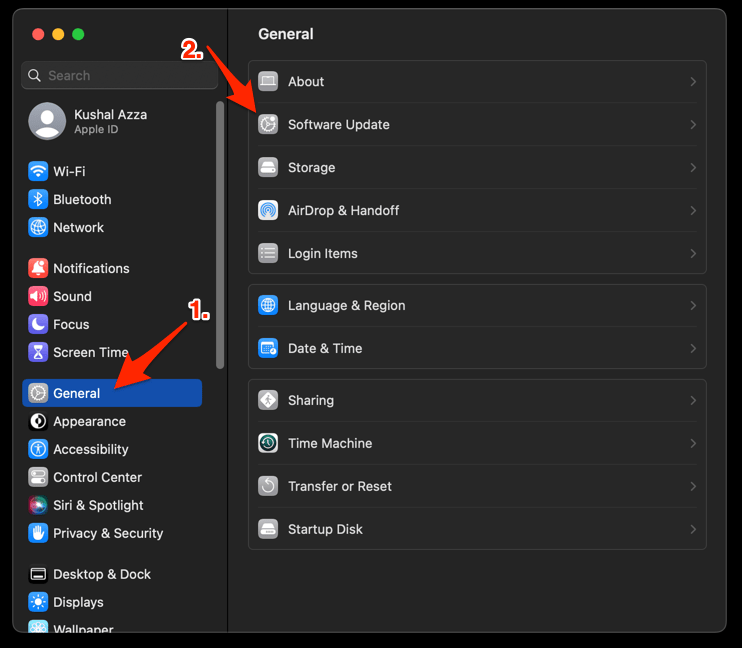 The program will check for software updates if any are available.
The program will check for software updates if any are available. - Click on the More Info.

- Select the Safari updates, if any are available, and hit the button.
After you install the updates, make sure to restart the Mac machine. It will ensure the backend broken code is cleared.
Method 5: Empty Cache Data from Develop Menu
The Safari browser stores images and other static assets as a browser cache in local storage. This helps it load sites and assets quickly instead of downloading them from the web server.
However, the data may get corrupted or outdated, resulting in issues with images or even the site loading. Flushing the cache ensures that obsolete cache and data are removed.
- Launch the Apple Safari on your Mac.
- Click on the Safari menu and select the Settings sub-menu.

- Switch to the Advanced tab and enable the check box for the Show Develop menu in the menu bar option.
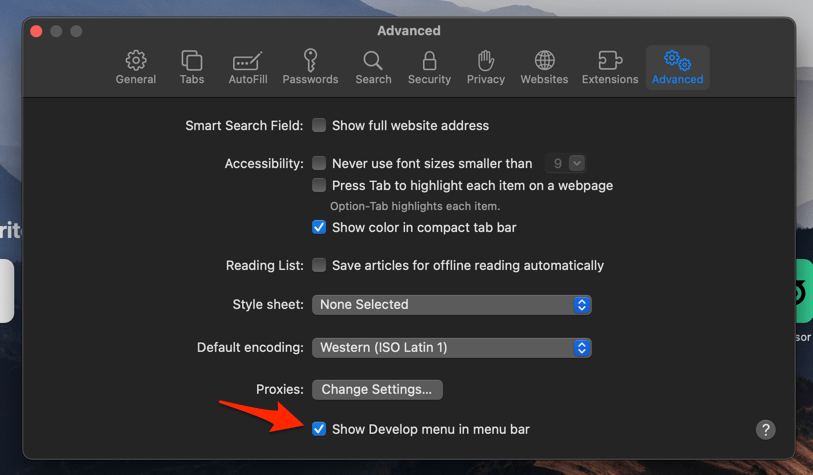 It will enable a new Develop menu in the Safari menu bar.
It will enable a new Develop menu in the Safari menu bar. - Click on the Develop menu on the menu bar.
- Select Empty Caches from the drop-down menu.
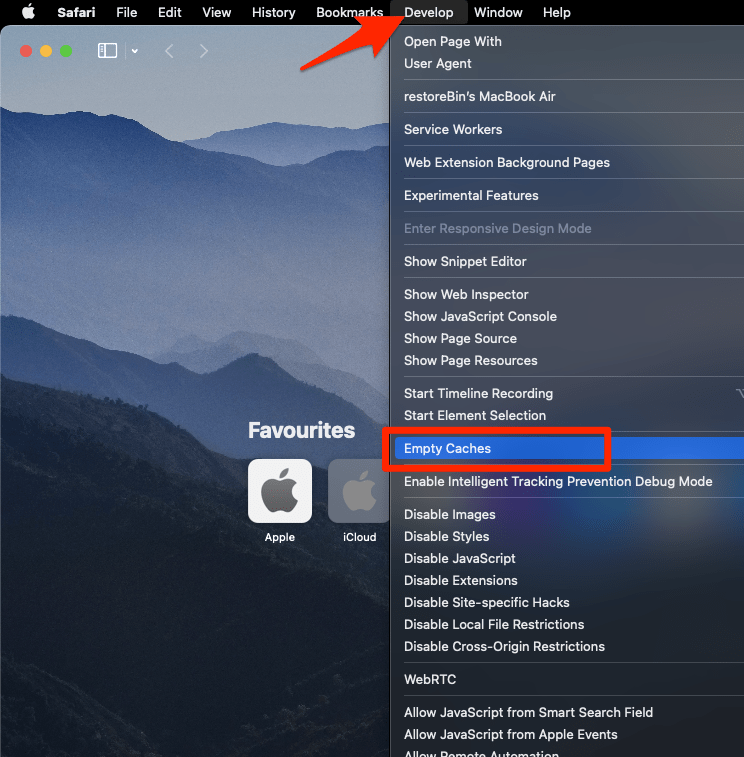
After you have cleared the cache, restart the browser as a fresh one. The Force Quit or Activity Monitor option can kill Safari’s background processes.
Note: Clearing the cache will lead to slow site loading performance for a few instances, and you may also log out of the account. Keep your account passwords in sync with Keychain and iCloud.
Method 6: Turn Off Browser Extensions
There are multiple browser extensions that do not readily exist to add functionality. However, these extensions can conflict with basic functionality like page rendering, resulting in a distorted image load. You should consider temporarily disabling the installed extensions to identify the bad actors.
- Open the Safari app on your Mac.
- Click on Safari from the menubar and select the Settings menu.

- Switch to the Extensions tab in the Settings window.
- In the left pane, uncheck the checkbox to Turn Off the corresponding extension.

After disabling all the extensions, you can check if the issue has been resolved. Then, enable each extension one by one to identify the troublemaker.
If you find the culprit, you can use the command button to remove the extension.
Bonus: Use Safari browser Alternatives
If none of the troubleshooting methods worked, and you need proper images, switch to Safari alternatives for macOS.
Multiple browsers, such as Google Chrome, Microsoft Edge, Mozilla Firefox, etc., are fully compatible with the Mac system. You can download and install them.
Meanwhile, you can keep checking for updates on your system and, after a successful update, switch back your default browser app to Safari if required.
Bottom Line
We are still determining the exact reason for the image loading issue on the Safari browser. However, the above troubleshooting methods can rule out some of the most common problems affecting the rendering engine.
If the issue is widespread, the Apple Developers will eventually release an update to fix it. You can report the problem and get notified once it is resolved. Otherwise, wait for the next update; until then, the alternatives are always handy.
Lastly, if you've any thoughts or feedback, then feel free to drop in below comment box. You can also report the outdated information.


